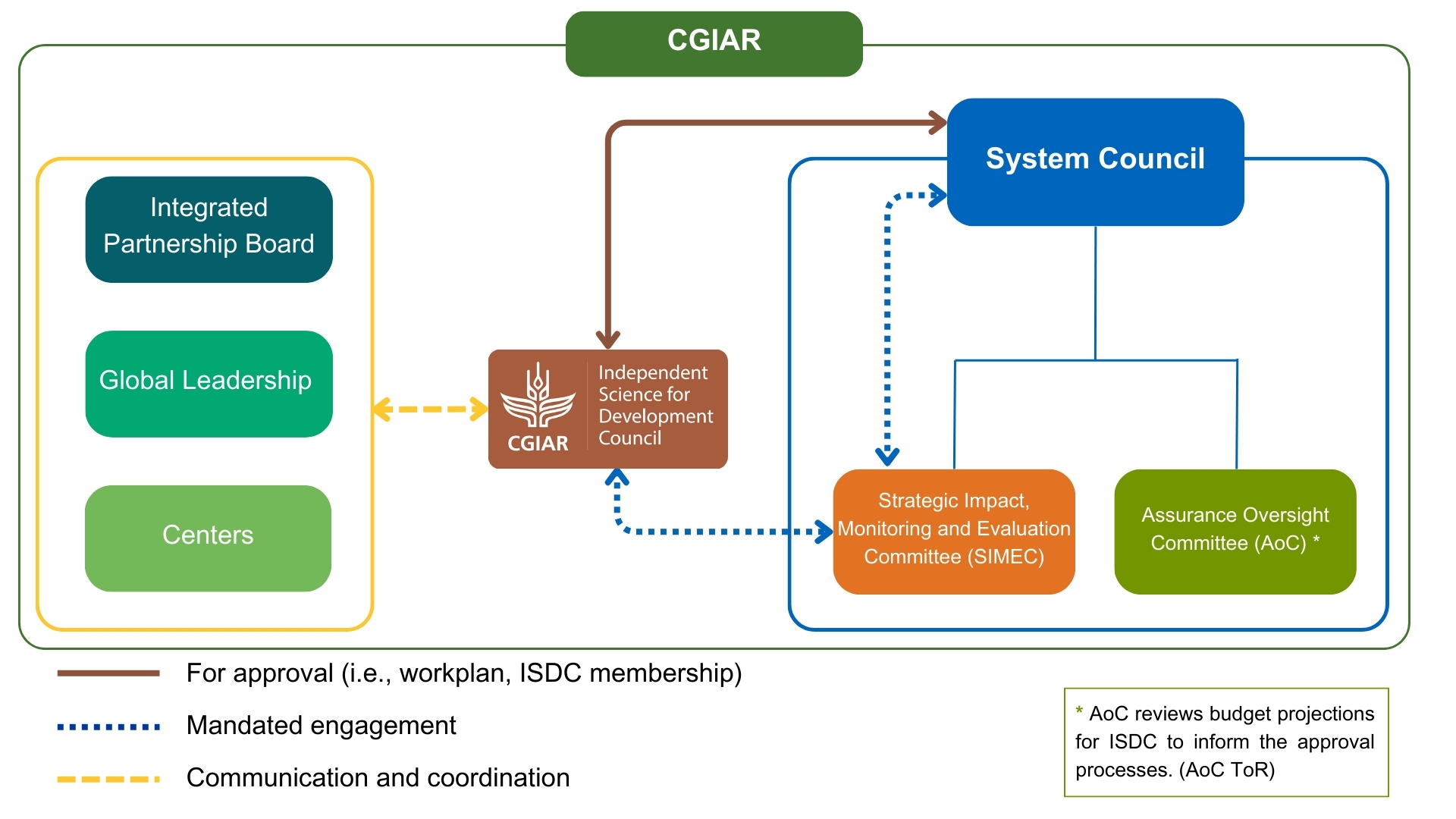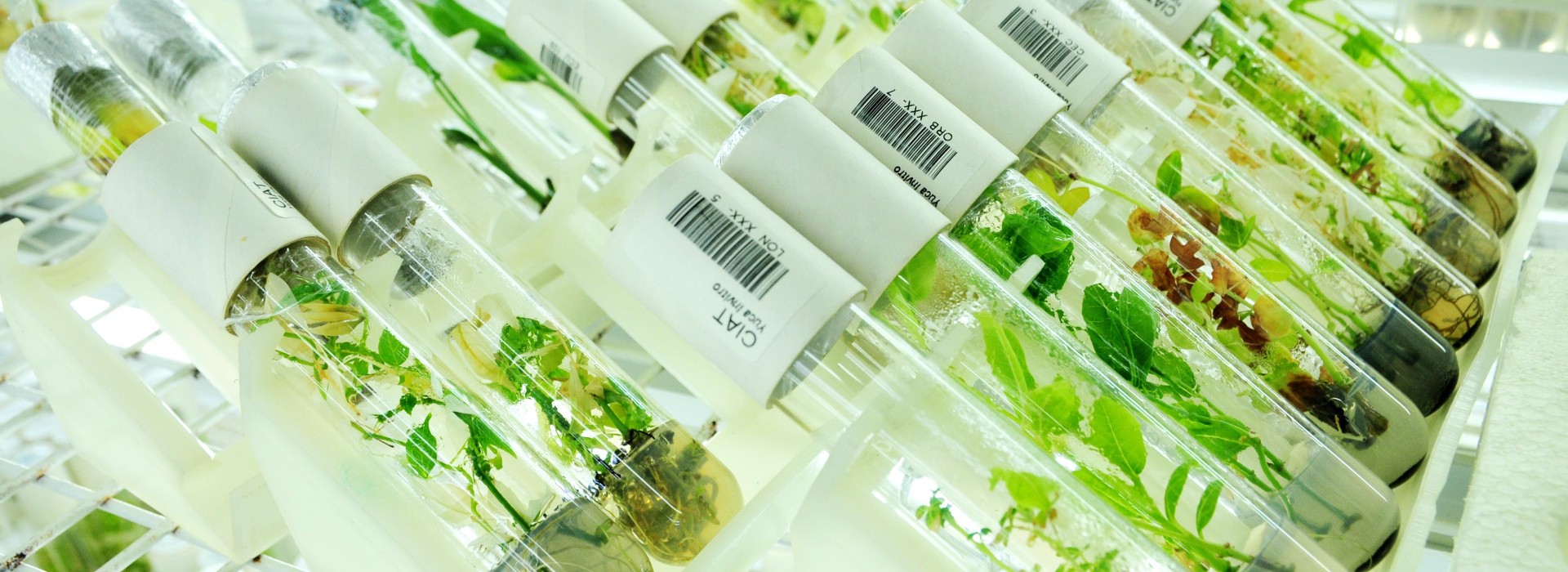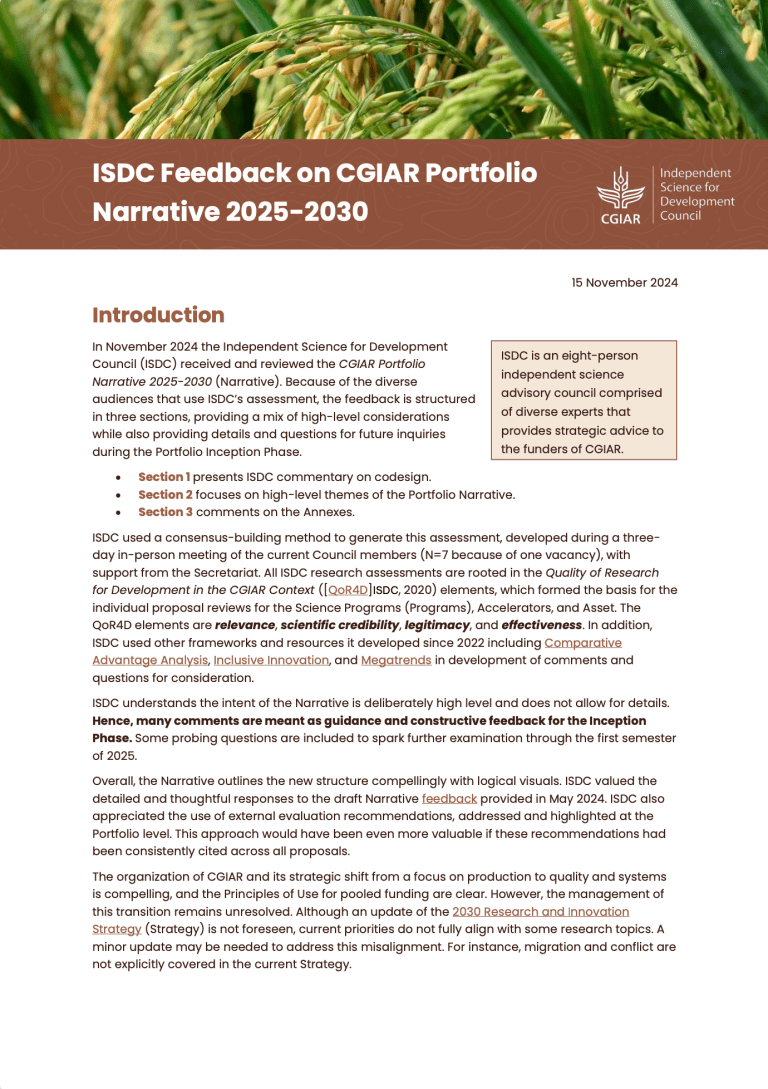CGIAR is a vast and complex organization and understanding its different bodies can sometimes feel overwhelming. The Independent Science for Development Council (ISDC) plays a crucial role within this system as an independent science advisory body. Comprising of eight diverse experts, ISDC provides strategic advice to the System Council, the funders and country representatives of CGIAR. ISDC is also one of three functions supported by the Independent Advisory and Evaluation Service (IAES). Sounds complex, right?
But don’t worry! To make ISDC easier to understand, the ISDC Secretariat developed ISDC 101, an engaging and user-friendly online training tool designed to help anyone independently learn the why, who, how, and what of ISDC.
This free, interactive platform combines text, visual graphics, videos, and links with self-assessment quizzes at the end of each module, making learning both easy and enjoyable. ISDC 101 is structured into seven modules, covering everything from ISDC’s role to its core framework and past projects:
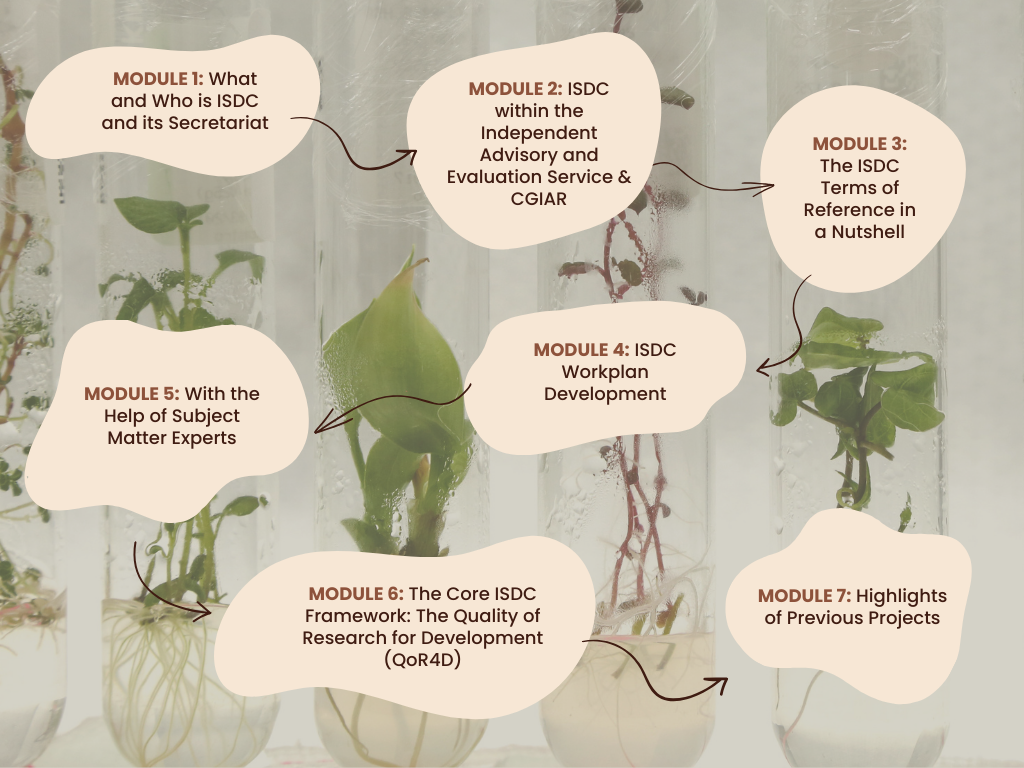
In this blog, we’ll give you a sneak peek into what is ISDC and how it fits into IAES and CGIAR. But this is just the beginning! To gain deeper insights and fully understand ISDC’s role, explore ISDC 101 now.
What is ISDC
ISDC within IAES
ISDC is one of the three functions the Independent Advisory and Evaluation Service (IAES) supports. IAES is an independent office that is hosted in Rome, Italy, at the Alliance of Bioversity International and CIAT. The other functions include:
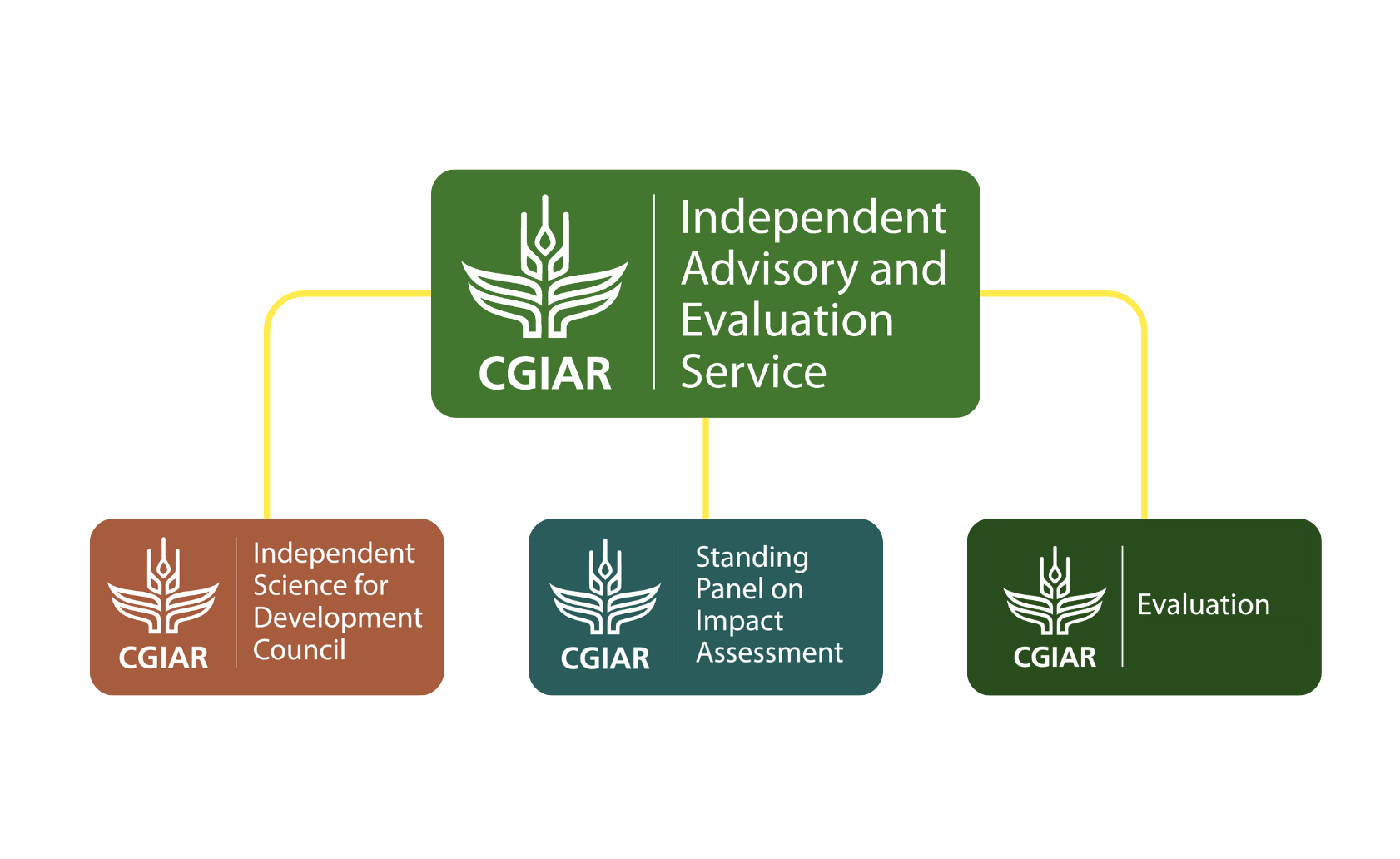
ISDC within CGIAR
The independent Science for Development Council interacts with many groups across CGIAR. ISDC receives approval for items such as its work plan and the appointment of new members from System Council and engages formally throughout the year with the Strategic Impact Monitoring and Evaluation Committee (SIMEC).
Another subcommittee of System Council is the assurance oversight committee, which reviews ISDC's budget.
Other entities that ISDC communicates and coordinates with often, are the Integrated Partnership Board, the Global Leadership Team, which includes the Executive Managing Director and the Chief Scientists for example, and CGIAR Centers.
